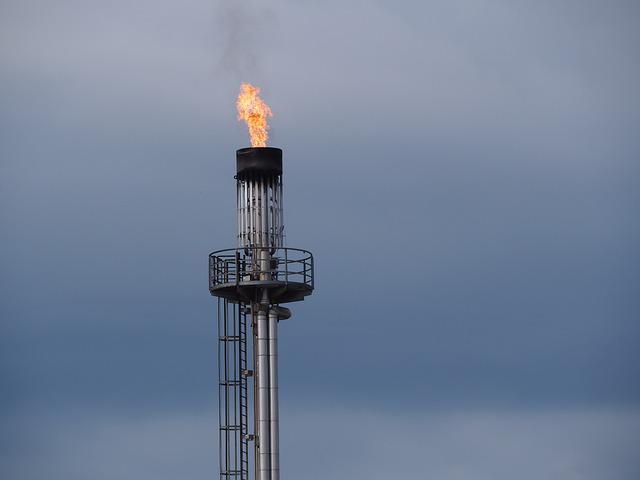Is Natural Gas a Nonrenewable or Renewable Resource?
Natural gas was long considered to be a nonrenewable resource, much like oil and coal. However, developments in recent years that allow the production and collection of natural gas from farm waste or landfills have made natural gas a renewable resource.
Are Natural Gases Renewable?
Natural gas that is piped from the ground is not renewable, any more than oil or coal. However, because it is formed from decomposing animal and plant waste, it is a renewable resource.
This idea started when people worked on ways to collect the methane that is naturally produced at landfills. It has since grown to include special plants, usually constructed in farming country, that make use of farm waste substances such as cow manure and plant stalks.
This material is kept in large tanks under special conditions, leading to the microorganisms inside producing methane while they digest the waste. This gas is then collected, processed, and used.
Collecting the methane gas produced in municipal solid waste landfills has two benefits. The gas itself is, of course, of value. Collecting it for use also means that the methane is not released into the atmosphere as a greenhouse gas.
Once the solid waste is deposited into a landfill, it undergoes a decomposition process affected by oxygen near the surface. This process doesn’t produce much methane gas. After about a year, anaerobic, or oxygen-free conditions are usually produced, allowing the bacteria that produce methane to get to work and produce the gas.
Methane production in a landfill usually goes through four stages. In the third stage, methane production begins and moves to a steady production by stage four. In a landfill, the various areas can be in any of the stages, depending on how long the waste has been there. Once collected, the gas has to be processed.
When landfill gas is collected, it’s done by piping buried in the landfill. Moisture is first removed from the collected gas, then it is further treated to remove any impurities. It is then ready to be released into the pipeline grid or piped into tanker trucks for transport.
Nonrenewable Resources
A nonrenewable resource is defined as a natural resource that cannot be readily replaced naturally and quickly enough to keep up with consumption. When we think of nonrenewable resources, we usually think of oil and coal. These are the two that we are aware of in our daily lives. Coal is formed from land-based plants, usually in coastal swamps or bogs. Oil and natural gas usually form from marine organisms, such as phytoplankton and algae.
However, there are more nonrenewable resources than just these two that affect our everyday lives. Any metals that are extracted from the earth are also nonrenewable resources. Think about all the things in your home that are made from or contain metal. Even your cell phone and computer have metal to make connections in their processing chips. Mined metals are definitely nonrenewable.
Gems are another such resource. While most people think of their use in jewelry, gemstones that are not considered to be good enough for jewelry are often used in a surprising number of products. Diamond bits and dust are used in the manufacture of industrial saws to cut stone and other ornamental stones. Stones such as quartz, rubies and sapphires are used in the manufacture of watches, semiconductors and lasers.
Rare earth elements are nonrenewable resources that many have not heard of, yet they are essential in the production of items that we use all the time. They consist of 17 metallic elements used in the necessary components of over 200 products, especially high-tech products. Many of them are used in the form of magnets. These elements are contained in ores, but usually in concentrations less than ten percent. It takes a lot of processing to produce the specific elements that are desired.
They are used in computer hard drives, cell phones, flat-screen televisions and monitors, and electric and hybrid vehicles. They are used in many defense devices, such as guidance systems, displays, lasers, and both radar and sonar systems. The amount of rare earth elements used in a particular device may be tiny, but without the elements, the device couldn’t function.
Land surface, especially arable land, is another nonrenewable resource. Once land has been depleted of its nutrients through faulty farming practices, it may take more work and materials than is feasible to restore it. Likewise, land that has been polluted by chemical runoff or dumping, or older mining and refining processes is just too expensive to try to reclaim, if it’s even possible.
Land that protects coastlines that has been lost cannot be reclaimed. For instance, New Orleans’ wetlands and barrier islands, which once protected the city from the worst of storm surges and other damage from weather, have been disappearing for some time. Over the past five decades, the U.S. Geological Survey estimates that an average of 34 square miles of wetlands has disappeared every year for the past 50 years. This land cannot be renewed.
Water is probably the most important resource we have. No living thing can live without water. However, due to pollution and redirection of some rivers and other water sources, some sources of clean water have disappeared.
In the west, there have been several rivers, most notably the Colorado, which are nothing like they used to be once people started piping the water away to water farmland in dry areas. This practice has affected rivers all over the country. Likewise, overuse of underground aquifers has lowered the groundwater level so that in some places, drilling a water well deep enough to reach the water is no longer feasible.
Renewable Natural Gas
Natural gas is one fossil fuel that is actually renewable in a way. Scientists began to work on ways to contain and use the natural gas formed in landfills, for instance. Their methods have led to ways to produce this resource.
Renewable natural gas, or RNG, is now being produced at facilities, usually in farming country. Animal waste, such as cow manure, and plant residues, such as leftover crop stalks and other similar waste, are collected at special plants.
The waste is collected into a digester, which provides the right conditions for the microorganisms to digest the waste and turn it into biogas. The gas is collected, then processed into the form required for RNG, which can then be injected into the gas grid. The digested material doesn’t go to waste. It can be used on local farms as fertilizer and for other purposes.
Where Does Natural Gas Come From?
Natural gas, like coal and oil, is formed from living things such as plants, animals, and microorganisms that lived millions of years ago. Dead plants and animals are gradually covered by sediment and soil, compressing the organic matter. As more soil is piled on top, temperatures increase the deeper the organic matter is covered. The molecular breakdown that this causes creates methane or natural gas.
Because of the way it’s created, methane is often found around oil deposits. In fact, in the early days of oil drilling, many oil drillers would just burn off the methane that would spout from the wells they were digging, as they didn’t have any use for it. Oil deposits usually contain far more oil than gas if they are closer to the surface. In the deeper regions, gas is usually more prevalent than oil.

Another way natural gas is formed is by methanogens, which are tiny organisms that live in animal and human intestines and in areas near the earth’s surface that don’t have much oxygen. Landfills, which are full of organic matter that’s decomposing, usually have plenty of methanogens busy creating biogenic methane. Most of it escapes up into the air, but there have been ways created to harvest this methane for use.
Natural Gas Definition
Natural gas is defined as a flammable gas that occurs naturally underground. It contains methane and other hydrocarbons. Natural gas was often seen as a useless product encountered when drilling for oil, and it was burned off from the wells when it came to the surface. This practice is still in use in some countries, producing flares that are large enough that they can be seen from the space shuttle.
The first well that was intentionally drilled to get a flow of natural gas from a surface seepage was drilled in Fredonia, New York in 1821. It only took a 27-foot-deep well to get to the gas. However, in the late 1700s, Britain began using natural gas produced from coal to light houses and streets.
Baltimore, Maryland became the first American city to make use of natural gas when it started lighting its streets with the gas in 1816. Once cities started to transition to the use of electricity for street lighting, it became more feasible to start to run pipelines to homes. The invention of the Bunson burner in 1885 proved to be a method for people to start using gas to heat their homes and cook.
To answer the question “is natural gas a nonrenewable or renewable resource” it certainly has proved to be renewable. Because of this, more and more use is being made of the gas. Cities are routinely purchasing vehicles that can use the gas, such as garbage trucks and other municipal vehicles. Filling stations for natural gas vehicles are being constructed. More and more plants are being constructed to make use of the production of the gas. Because of all this, natural gas is sure to stay useful for a long time.
Recent Posts
Understanding Energy and Electricity: The Power For Progress
Energy and Electricity Energy and electricity are integral components of modern life, powering everything from homes and businesses to transportation and communication. Without them, the...
The Future of Wind Energy The future of wind energy is set to play a critical role in addressing global energy needs while combating climate change. As renewable energy sources like wind and...


